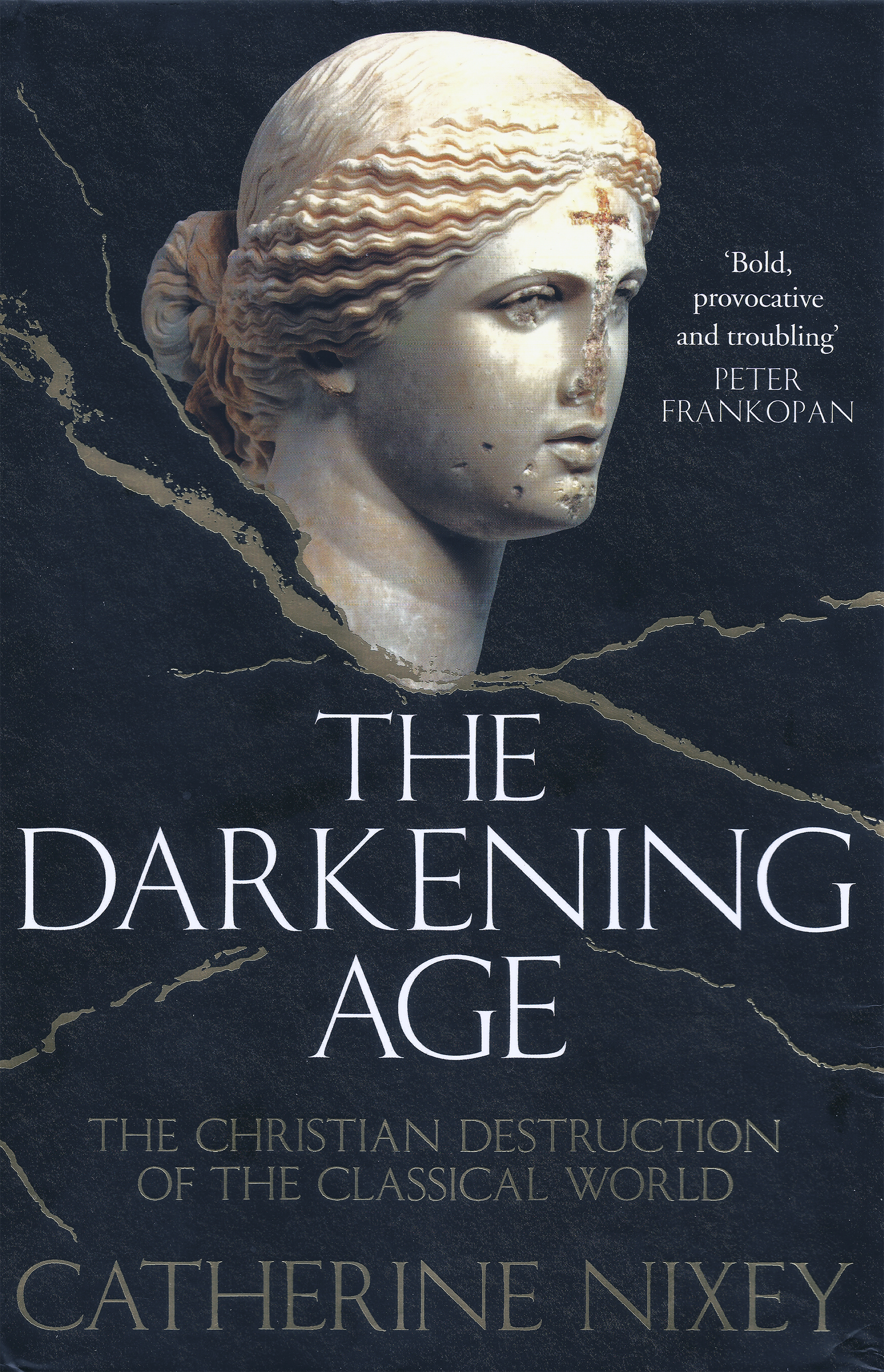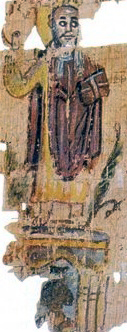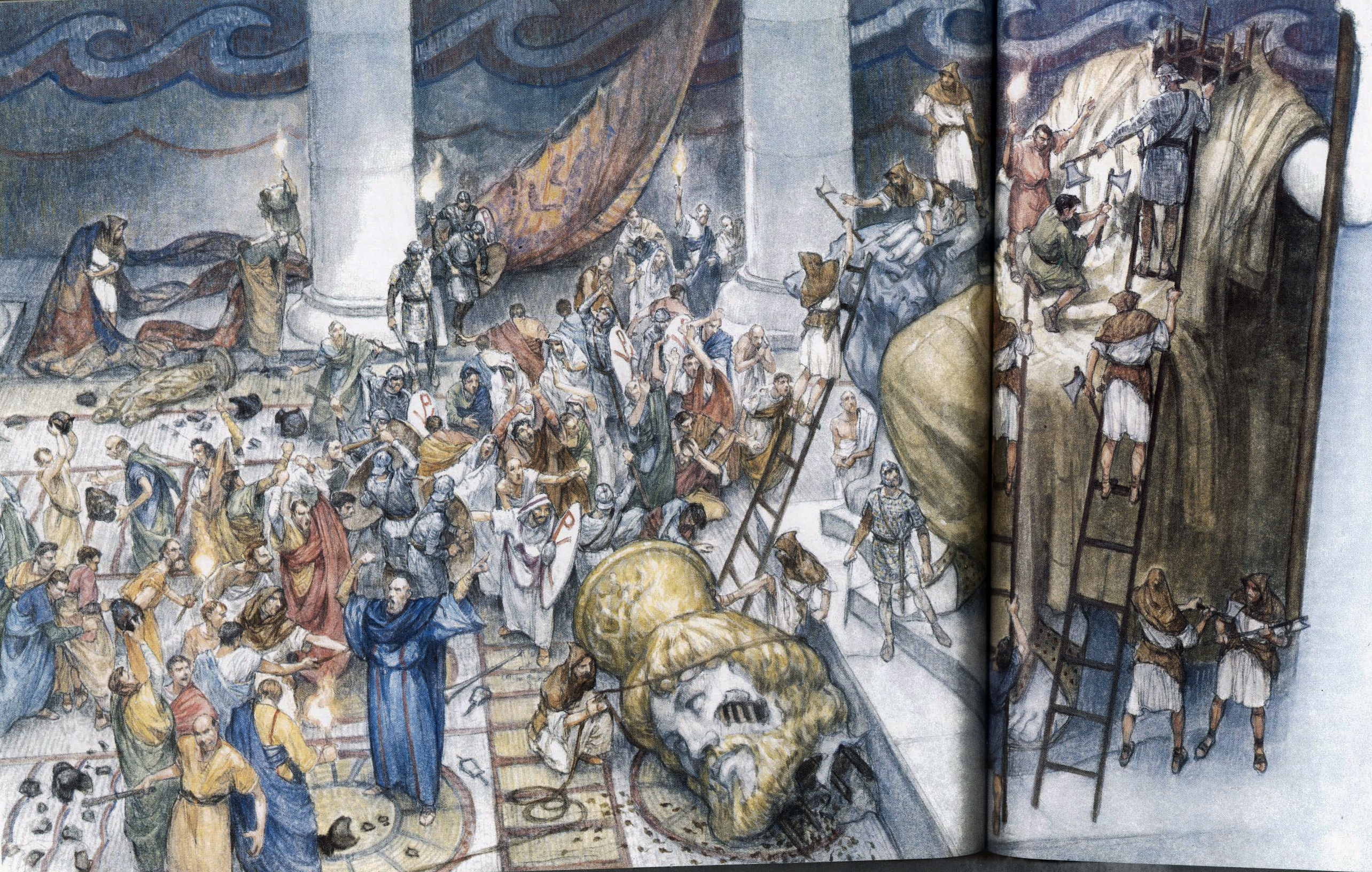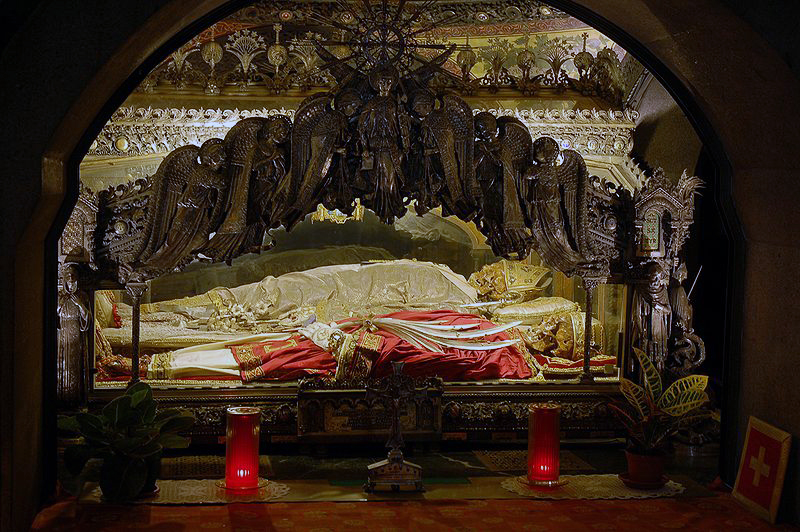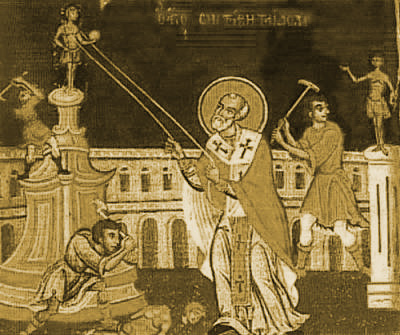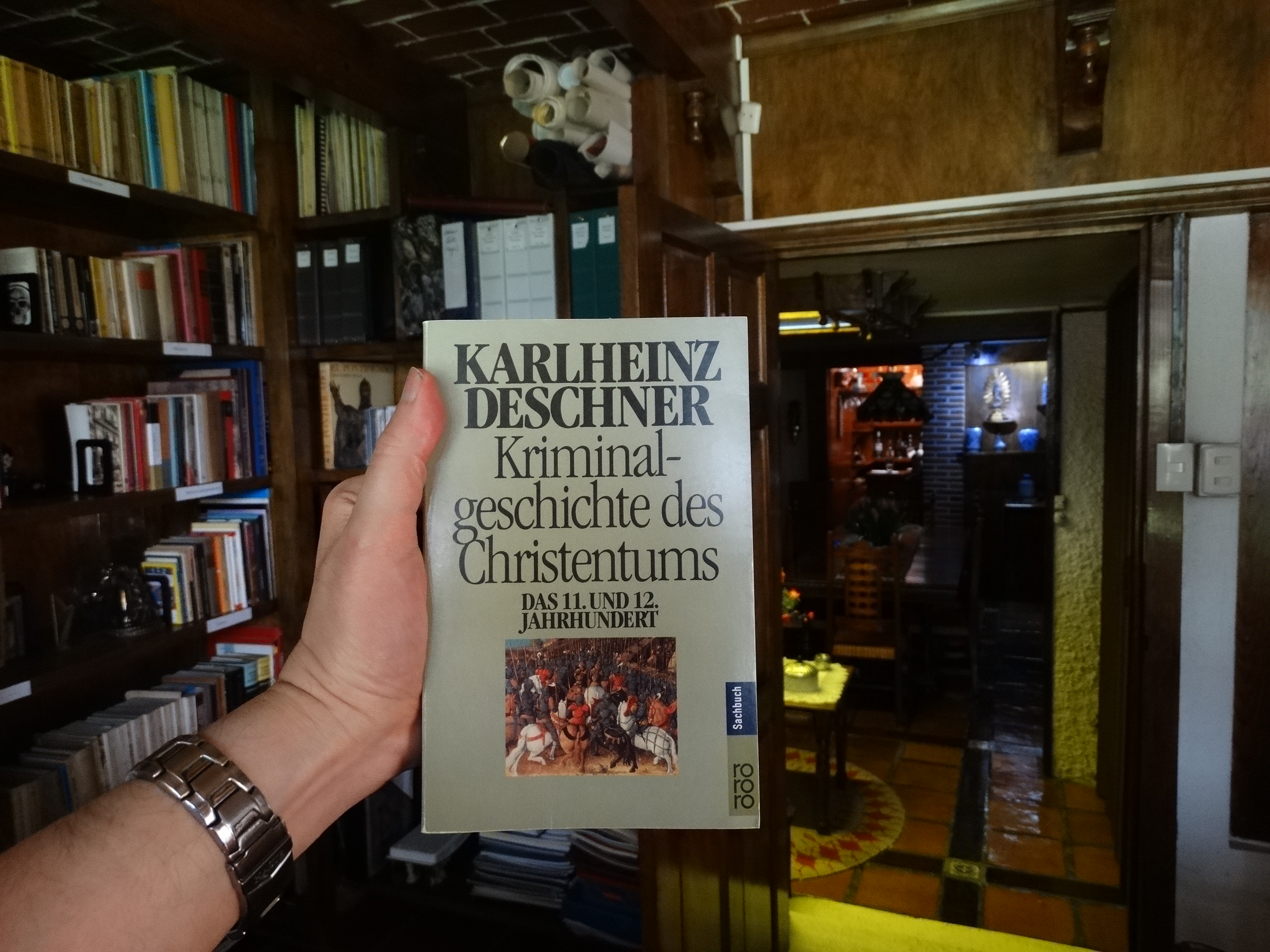A note of the Editor to those who tried
to defend the statue at Charlottesville:
Perhaps you ignore that removing the statues that represent the white and healthy part of a culture has been a practice that goes back to Antiquity.
As to why the non-white, African Augustine, considered the destruction of the Greco-Roman statues an act of devotion, recall what Evropa Soberana wrote in his essay on Judea against Rome: ‘To destroy a statue was to destroy the Hellenic human ideal: it was to sabotage the capacity of [Aryan] man to reach the very Divinity, from which He proceeds and to which He must return one day’.
______ 卐 ______
Augustine attacks classical culture
Just as he repressed the ‘heretics’, evidently Augustine also repressed the so-called ‘pagans’.
The bishop fought against ‘the infamous gods of all kinds’, ‘the ungodly cults’, ‘the rabble of gods’, the ‘impure, abominable spirits’; ‘they are all bad’, ‘throw them away, despise them!’ Augustine insults Jupiter by calling him ‘seducer of women’, speaks of his ‘numerous and malignant acts of cruelty’, of the ‘irreverence of Venus’; defines the cult of the mother of the gods as ‘that epidemic, that crime, that ignominy’, to the great mother herself as ‘that monster’ who ‘through a multitude of public gallants gets the Earth dirty and offends the sky’, and says that Saturn surpasses them ‘in that shameless cruelty’.
Like Thomas Aquinas or Pope Pius II, Augustine defends the maintenance of prostitution so that ‘the violence of the passions’ does not ‘throw everything down’: the usual Catholic double standard. (Popes like Sixtus IV [1471-1484], creator of the feast of the Immaculate Conception of Mary, and bishops, abbots and priors of honourable convents, kept profitable brothels!) Augustine repeats the already trite arguments against polytheism, from the matter and insensibility of the statues until the inability of the gods to help. And, like many others before him, he identifies them with demons.
The scope, the methods and the disrespectful mockery that the saint shows are evident, and extraordinarily detailed, in his magnum opus The City of God (413-426), directed specifically against the adepts of classical culture: twenty-two books that were one of Charlemagne’s favourite readings. In this work, as the Catholic Van der Meer ponders, Augustine ‘sets accounts, from a high point of view, with all the old culture of lies’, in favour of a new and far worse culture!
Augustine even resorts to counterfeiting, since in The City of God, in which the belief in the gods appears as the capital vice of the Romans; in which polytheism appears as the main cause of moral defeat as well as the fall of Rome in 410; as the main motive of all crimes, of all the mala, bella, discordiae of Roman history—in his masterpiece, then, Augustine does not hesitate to ‘discredit by means of conscious deformations’ (F.G. Maier) the world of the gods, allowing himself, when writing about the so-called pagans ‘any means’, even the ‘falsification of quotations’ (Andresen). ‘Lying and scandal are the two great things on which everything is based on the polytheistic faith’ (Schuitze).
At the beginning of his life as a bishop, Augustine had simply preached to use the wicked against the violence of the wicked. He soon fights the adepts of classical culture with the same lack of scruples as the ‘heretics’.
The Roman state itself is bad, a second Babylon, ‘condita est civitas Roma velut altera Babylon’. He justifies with resolution the eradication of the Old Faith; he orders the destruction of temples, centres of pilgrimage and images, the annihilation of all cults: a measure of reprisal against those who had previously killed Christians. He also affirmed that there was a common front of all those he condemned—heretics, adepts of classical culture and Jews—’against our unity’. Thus, around the year 400 he says triumphantly: ‘Throughout the Empire temples have been destroyed, idols are broken, sacrifices abolished, and those who worship the gods, punished’.
In response to Augustine’s phrase in which he says to welcome the Hellenists ‘with pastoral kindness and generosity’, the theologian Bernhard Kötting writes:
But he agrees with the laws and the measures of the emperor against the pagan cult and the sacrifices and the places where they are practiced, the temples. It is based on precepts of the Old Testament, where it is ordered to destroy the places of sacrifice to the idols, ‘as soon as the country is in your hands’.
As soon as one has power, annihilation follows ‘with pastoral goodness and generosity’! Several times Augustine rejected a literal understanding of the Old Testament in favour of an allegorical exegesis. However, the same as so many, other times he conveniently rejected the allegorical in favour of the literal.
As usual, the Catholic State fulfilled the requirements of the Catholic Church. Just as with the dispute with the ‘heretics’, in confrontations with the adepts of the classical culture there were first defamatory sermons by the clergy, strict canons, and then the corresponding civil laws. Then Greco-Roman culture in Africa was pushed back and annihilated.
In March of 399 the Gaudentius and Jovius committees profaned in Cartago the temples and the statues of the gods, according to Augustine, a milestone in the fight against the infernal cult. Later, Gaudentius and Jovius also destroyed the temples of the cities of the province, evidently with enormous satisfaction on the part of the holy bishop, for which the demolition of the idols already foreseen in the Old Testament is fulfilled. Augustine approves the decrees of 399 by the Christian emperor—who, based on Psalm 71: 11, finds justified—, in which he demands the destruction of idols and warns with the capital punishment those who worship them.
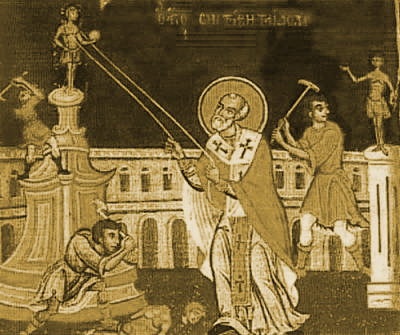 On June 16, 401, the fifth African synod decided to ask the emperor to demolish all the Greco-Roman shrines and temples that still remain ‘all over Africa’. The synod did not even allow so-called pagan banquets (convivio), because they performed ‘impure dances’, sometimes even in the days of the martyrs. The old Church again threatens Christians who participate in such meals with penances of several years or excommunication. There would be no communication with those who think differently.
On June 16, 401, the fifth African synod decided to ask the emperor to demolish all the Greco-Roman shrines and temples that still remain ‘all over Africa’. The synod did not even allow so-called pagan banquets (convivio), because they performed ‘impure dances’, sometimes even in the days of the martyrs. The old Church again threatens Christians who participate in such meals with penances of several years or excommunication. There would be no communication with those who think differently.
At the time, in June 401, Augustine again incited the destructive rage. In a Sunday sermon in Carthage, he congratulated himself on the fervour against ‘idols’, and mocked them so primitively that the listeners laughed. At the foot of the golden-bearded statue of Hercules, we read: Herculi Deo. Who is? He should be able to say it. ‘But he can’t. He remains as silent as his sign!’ And when he remembers that even in Rome the temples have been closed and the idols have been thrown down, a clamour resounds throughout the church: ‘As in Rome, also in Carthage!’ Augustine continues to stir: the gods have fled Rome to come here. ‘Think about it, brothers, think about it! I already said it, apply it now you!’
Emperor Honorius (393-423), one of the sons of Theodosius I, made great concessions in his time to the Church. He was subject to both the influence of Ambrose and that of his pious sister Galla Placidia, founder of temples and persecutor of ‘heretics’ by legal means, which in turn influenced Saint Barbatian (festivity: December 31), his counsellor for many years and great miracle worker.
Thus, after repeated requests of the Church, the emperor, through a series of edicts promulgated in 399, 407, 408 and 415, ordered to remove in Africa the images of the temples, destroy the altars and close or confiscate the sanctuaries, assigning the goods for other purposes. When Augustine asked in court a more severe application of the laws, Honorius did so, threatening even to resort to the garrison. ‘The Government was increasingly inclined to meet the demands raised from the Christian side’ (Schulze).
With the support of the Church and the State, the Catholic hordes were no less brutal in the ‘cleansing’ of the rural properties of Greco-Roman gods than the Circumcellions were previously. At times, Augustine even established as a rule that those who converted to Christianity should destroy the temples and the images of the gods themselves. This happened in Calama, near Hippo, where Bishop St. Possidius, biographer and friend of Augustine, was so hated that neither the members of the curia, the councillors, protected him.
However, while they assaulted the monastery and beat a monk with blows, the prelate escaped. And when the Christians demolished the temple of Hercules in Sufes, a tumult arose such that Augustine, who denounced the government of the city, still of the old religion, had to mourn the loss of 60 slaughtered brothers of faith. He reports it with a strange mixture of indignation, hatred and sarcasm, without saying a single word about how many adepts of classical culture lost their lives in the uproar caused by the Christians. It should be noted that in Sufes, as a response from the Church, the temples and images of gods that were still preserved were destroyed, with bloody fights, partly in the sanctuaries themselves.
If out of fear of the fanaticism of their adversaries, the Hellenists abjured their faith—as a multitude of Christians once did in front of the pagans—Augustine mocks: ‘These are the servants that the devil has’. He considered the destruction of the Greco-Roman cult centres and their statues as an act of devotion. On the battlefield against the Hellenists he celebrated the final victory achieved. Is it surprising that, in a letter to the father of the Church, the Neo-Platonist Maximus called the saints knaves?
At the request of Augustine, his disciple Orosius, an Iberian priest, continued the disruption and defamation of classical culture. Following the tendency of his teacher he wrote Historiarum Adversum Paganos Libri VII (Seven Books of History Against the Pagans). This apologetic, a sloppy and superficial product, became one of the most read works during the Middle Ages, perhaps the history book by antonomasia. It appeared in almost all clerical libraries and has completely contaminated historiography. Until the 12th century, this image of history manufactured by Augustine and Orosius predominated in the Christian world, and continued for a long time.
______ 卐 ______
Note of the Ed.:
The complete title of Augustine’s magnum opus was The City of God Against the Pagans. His legacy was so influential that, as Deschner says above, Charlemagne (742-814) was a fan of The City of God Against the Pagans (emphasis added).
Charlemagne was the first European emperor since the fall of Rome, and he slaughtered thousands of those Germanics who were not Christians or refused to become Christians. The Nazis even created a stone memorial to those Saxon victims in 1935.
White nationalists still ignore the tragic history of those centuries when the last Germanics, who still resisted the enforced infection of an originally Semitic cult, fell.
Liked it? Take a second to support this site.
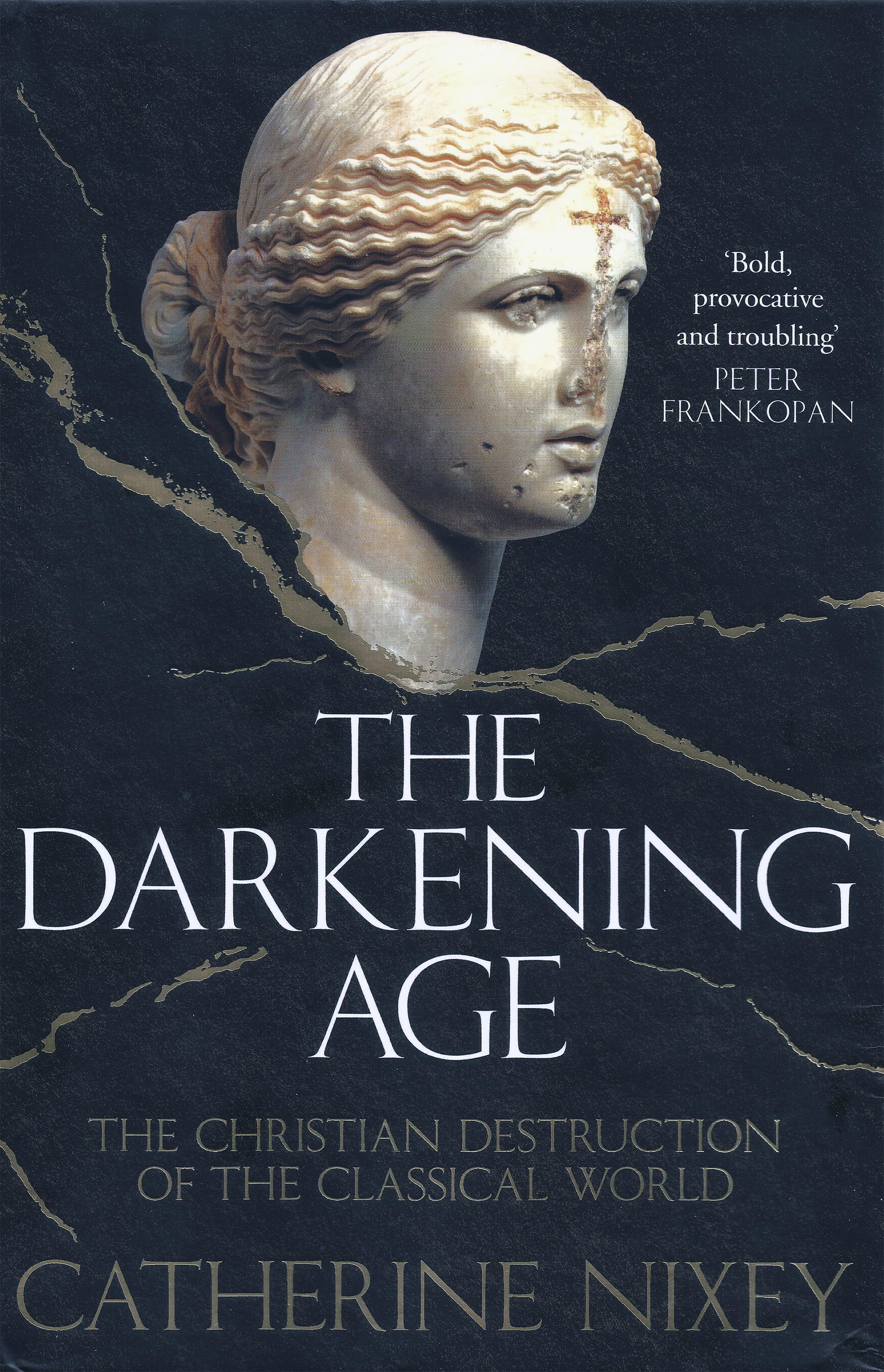 Celsus did not soften his attack either. This first assault on Christianity was vicious, powerful and, like Gibbon, immensely readable. Yet unlike Gibbon, today almost no one has heard of Celsus and fewer still have read his work. Because Celsus’s fears came true. Christianity continued to spread, and not just among the lower classes. Within 150 years of Celsus’s attack, even the Emperor of Rome professed himself a follower of the religion.
Celsus did not soften his attack either. This first assault on Christianity was vicious, powerful and, like Gibbon, immensely readable. Yet unlike Gibbon, today almost no one has heard of Celsus and fewer still have read his work. Because Celsus’s fears came true. Christianity continued to spread, and not just among the lower classes. Within 150 years of Celsus’s attack, even the Emperor of Rome professed himself a follower of the religion.